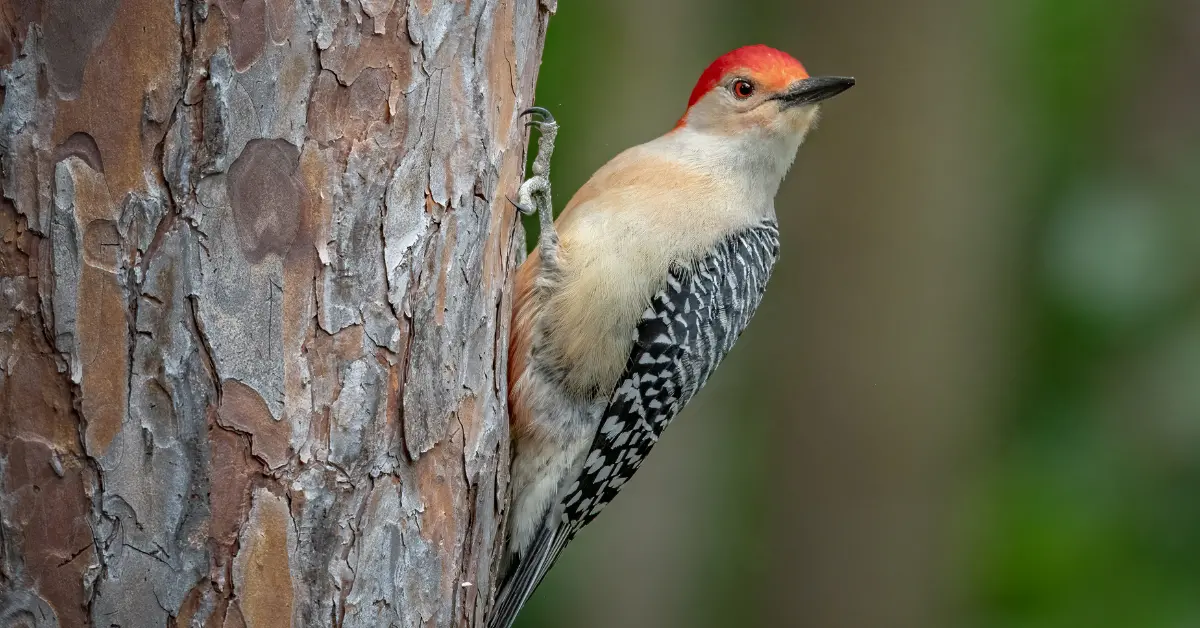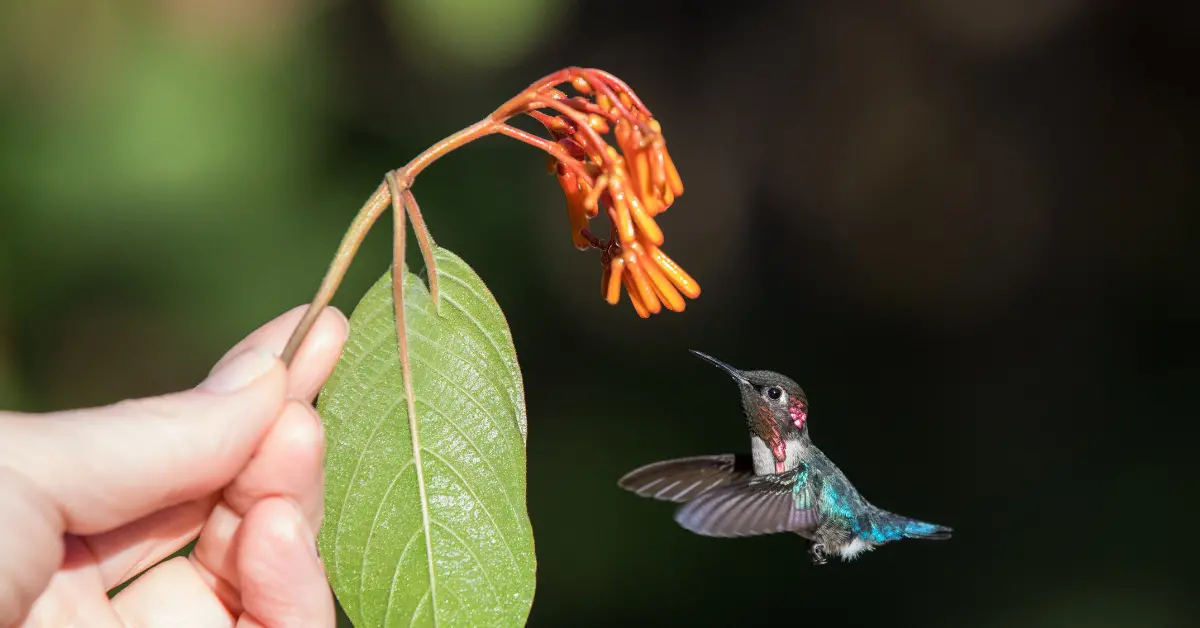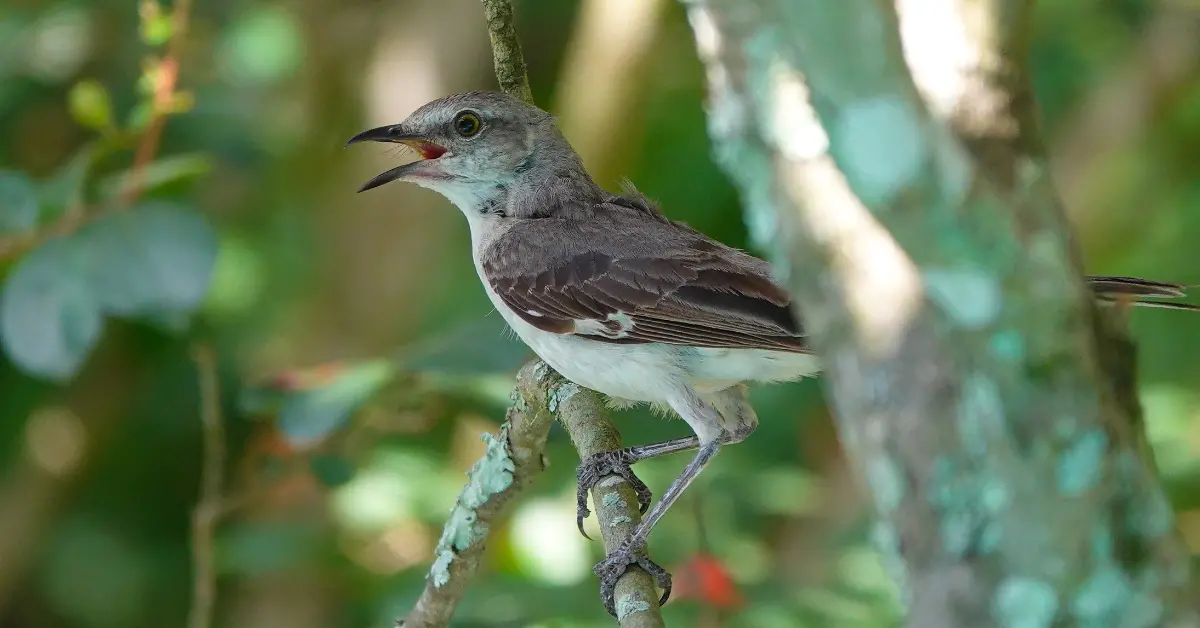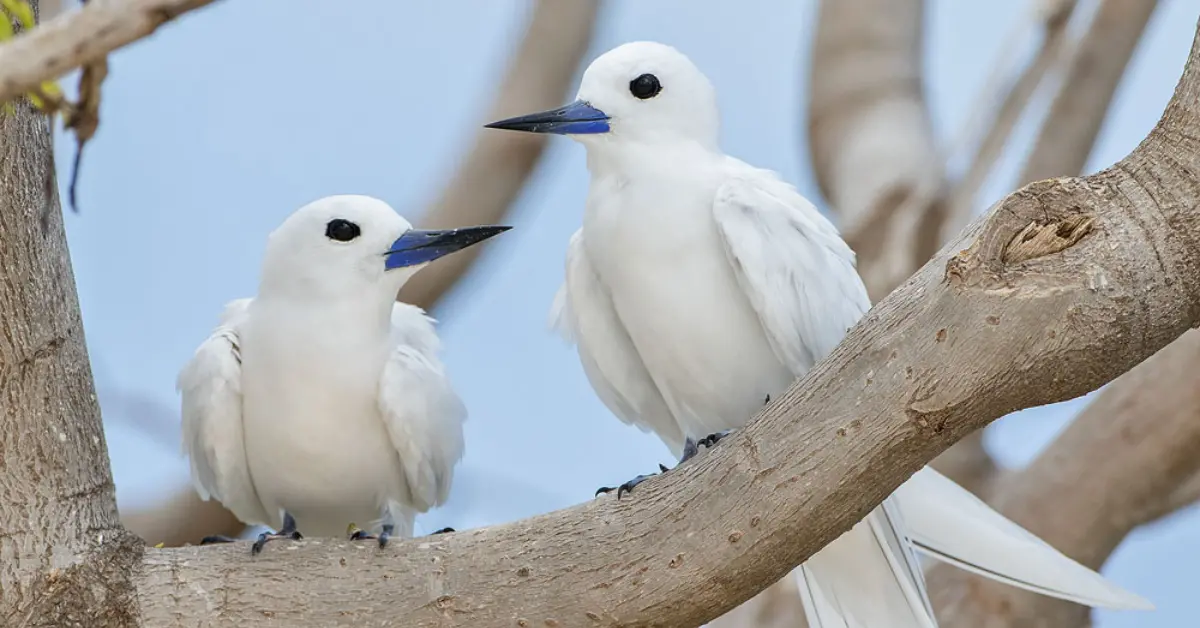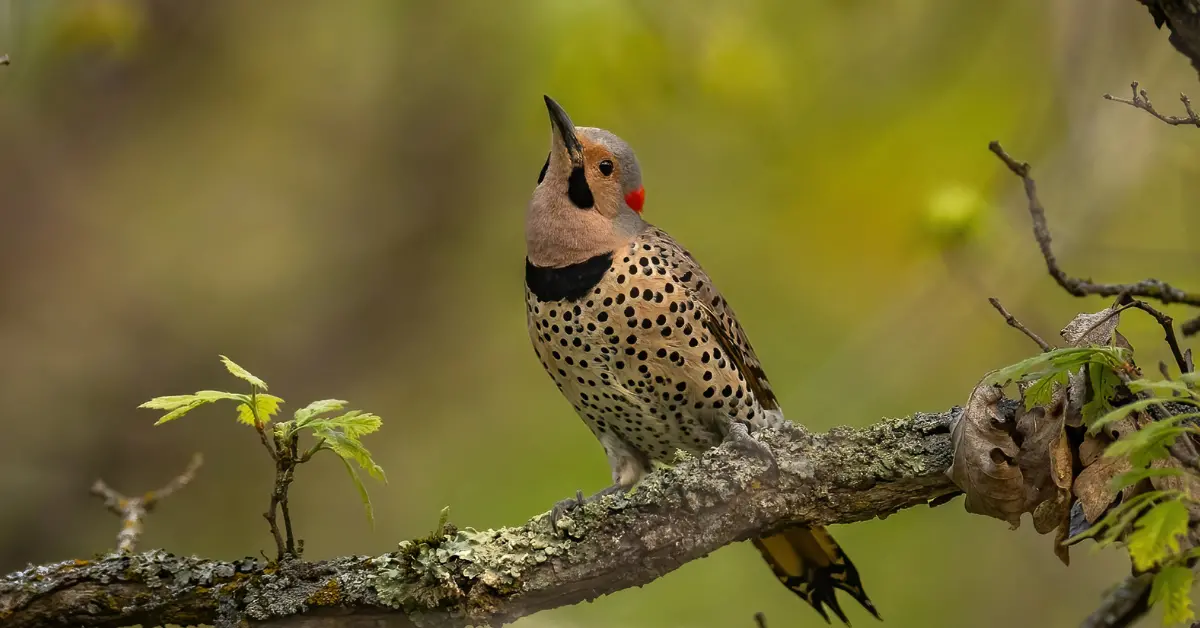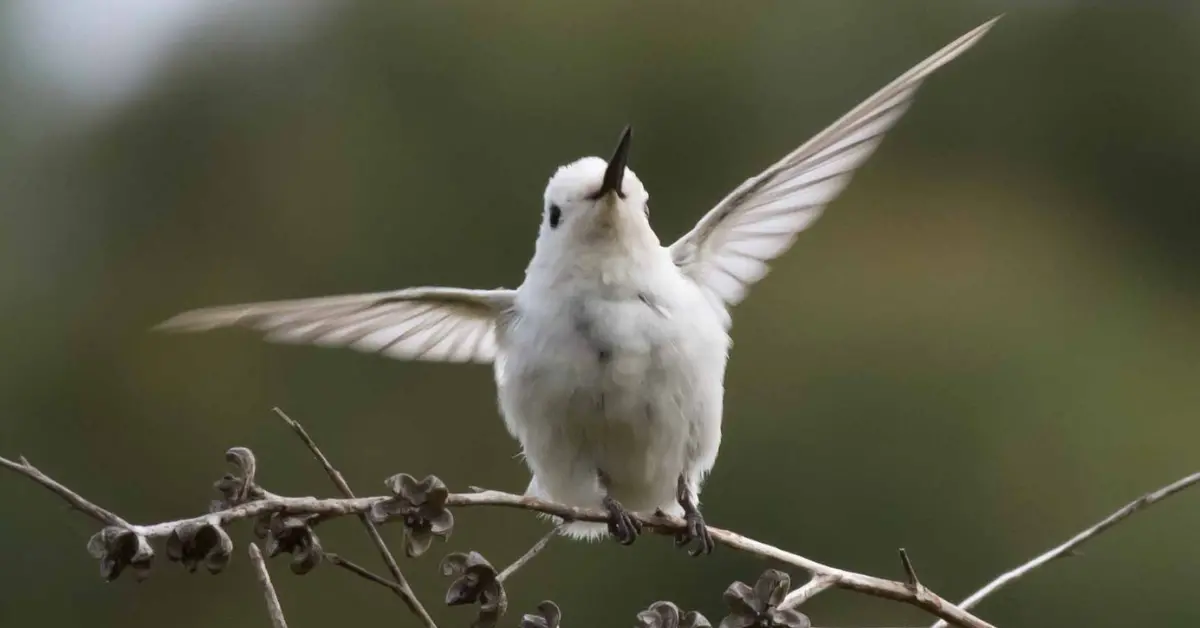Thrushes are a secretive and elusive bunch. Because of their mysterious nature, it’s always exciting for a birder to spot one in the woods.
While most thrushes are uncommon, some species in the group are well-known, such as robins and bluebirds.
Whether familiar or less common, in this guide, you’ll meet every thrush that visits or resides in North America.
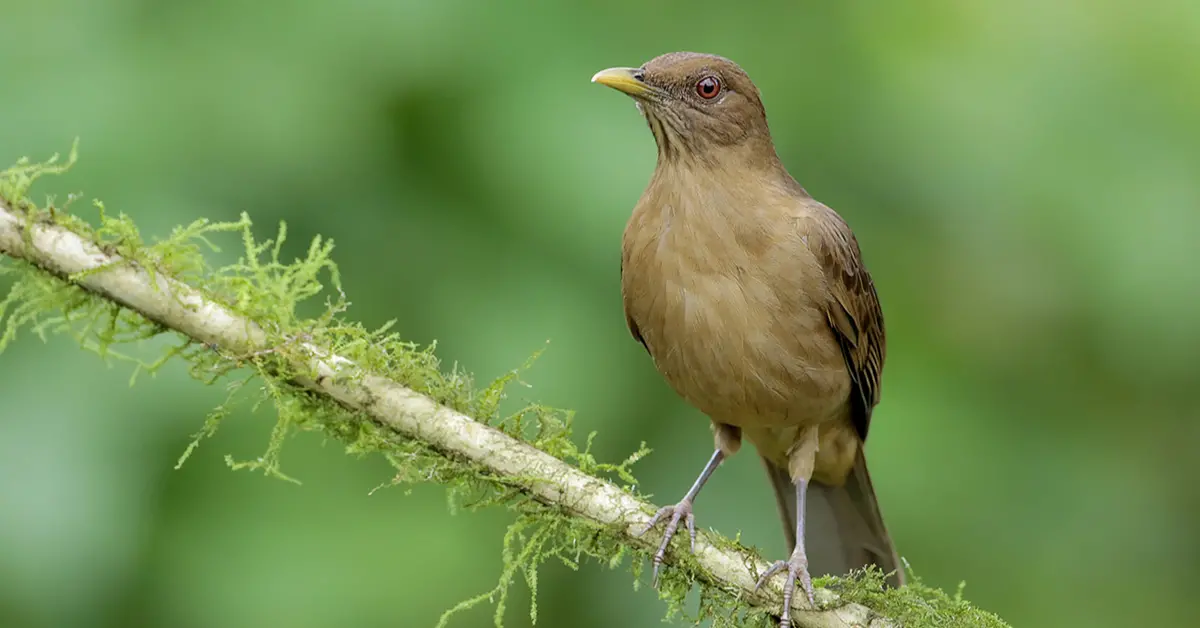
Before we dive into the 18 thrush species of North America, let’s discuss what unites these different thrushes into one family.
Common Traits of Thrushes
Thrushes belong to the Turdidae family, which was once considered part of the Muscicapidae, or Old World flycatchers family. There are 17 genera and 192 species worldwide. In North America, there are six genera and 18 species.
Besides their genetic similarities, thrushes share many common physical and behavioral traits. To start, they are all beautiful and melodious vocalists. Many produce amphoric tones, which are hollow, flute-like sounds similar to blowing into a bottle.
Physically, thrushes have:
- Long bodies
- Full, upright chests
- Long legs
- Relatively large heads
- Straight, pointed bills
They can range in color from earthy browns and rufous hues to orange and bright blue. Behaviorally, they all lay blue eggs and prefer woodland habitats. They spend most of their time foraging on the ground. If startled or scouting for food, they flutter up to a low-hanging branch or shrub. They tend to stick to the understory except when singing during the breeding season, at which time they seek a higher perch.
Common Types of Thrushes
1. American Robin
In North America, the American Robin (Turdus migratorius) is the most common and well-known thrush. Not only are they one of the most common thrush species, but they are also one of the most widely recognized backyard birds in North America.
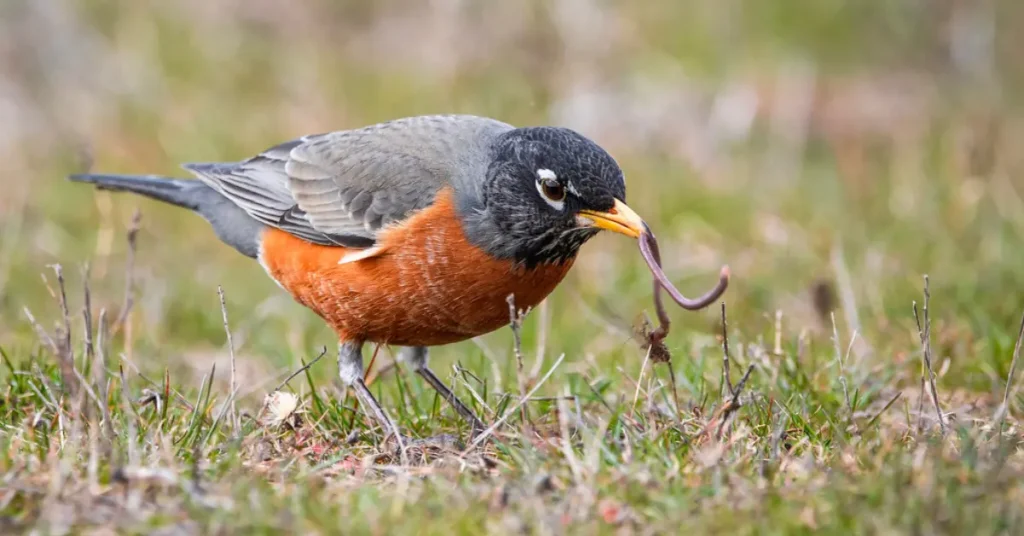
Robins are found year-round in the United States, with some populations migrating to Canada to breed. Some populations also migrate to the far south of the United States and Mexico in winter. The birds that stay year-round tend to be more elusive in winter, spending most of their time in the forest rather than in backyards.
American Robins are easily recognized by their bright reddish-orange chest and belly, dark grey back and head, yellow bill, and white marks around the eyes and throat.
1. Bluebirds
Three bluebird species in North America belong to the thrush family: the Eastern Bluebird (Sialia sialis), the Mountain Bluebird (Sialia currucoides), and the Western Bluebird (Sialia mexicana).
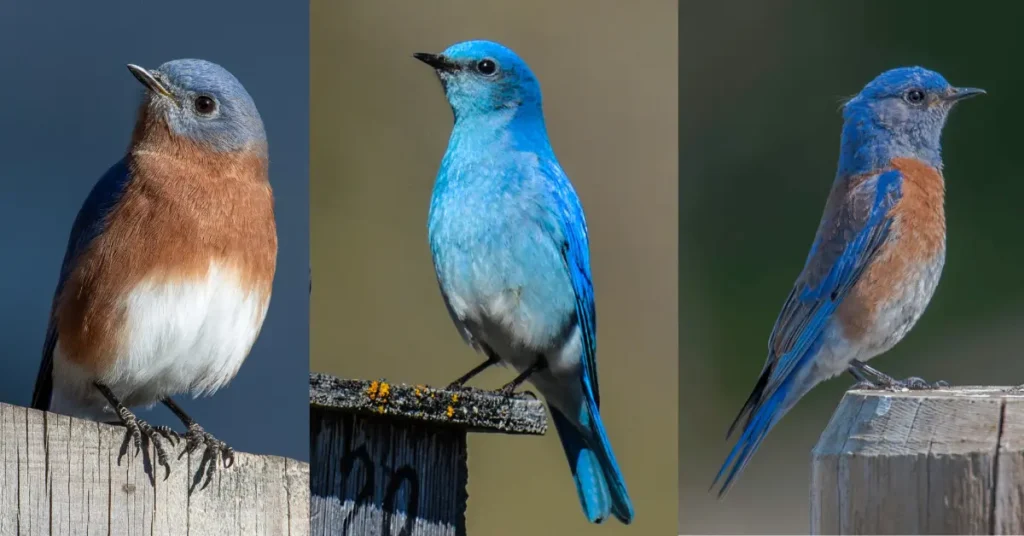
The Eastern Bluebird is common in the eastern United States. They prefer farms, open woodlands, roadsides, orchards, and suburbs with good nest sites. The males have a bright blue head and back, reddish-brown throat and chest, and white underbelly. Females are paler overall.
The Mountain Bluebird is common throughout the central and western United States and Canada. The males are bright blue all over, making them a striking bird. The females are grey to dusky-tan all over. Mountain Bluebirds prefer open lands, such as plains, valleys, sagebrush flats, desert, and farmland. They are also found above treeline and in conifer forests in mountainous habitats.
The Western Bluebird is common in parts of the Western United States and Canada, from southern British Columbia down to Mexico. They look similar to the Eastern Bluebird, but males have a blue throat and grey underbelly. They prefer open pine and oak woodlands, brush, deserts, and farmland.
2. Swainson’s Thrush
The Swainson’s Thrush (Catharus ustulatus) is common in the United States during peak migration. While migrating, they can be found in open woodlands, forest edges, and parks. They are often heard before they are seen, so make sure to familiarize yourself with their song.
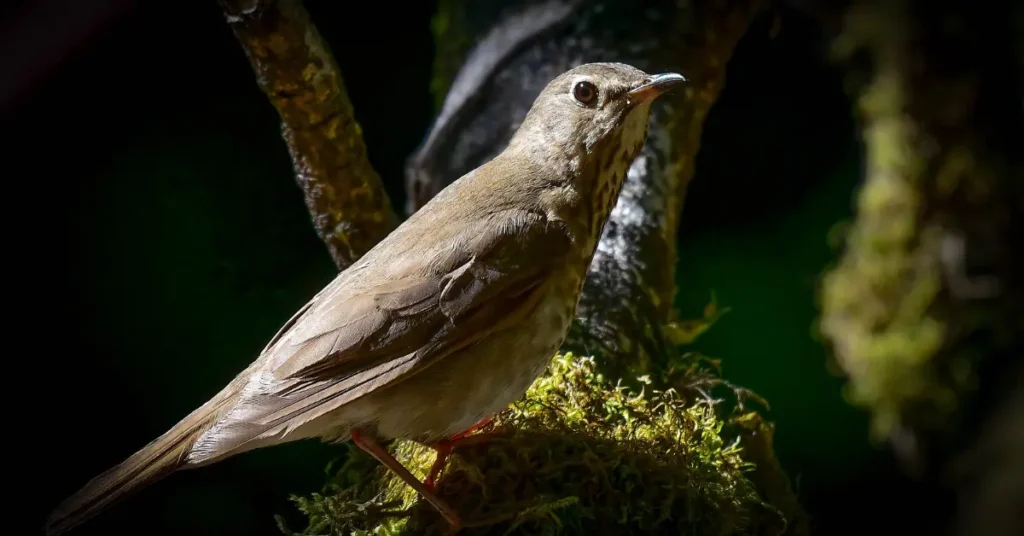
They breed throughout Canada and the Pacific Northwest down to California’s southern Coast. For breeding, they prefer mountainous conifer forests, as well as spruce forests and mixed deciduous woodlands.
The Swainson’s Thrush has an olive-hued back. In their Pacific range, they are more red than olive-toned. They have spots on their throat and chest and a bold white eyering.
3. Hermit Thrush
Found throughout Canada, the Great Lakes, and the western United States, the Hermit Thrush (Catharus guttatus) is one of the most common thrushes in North America.
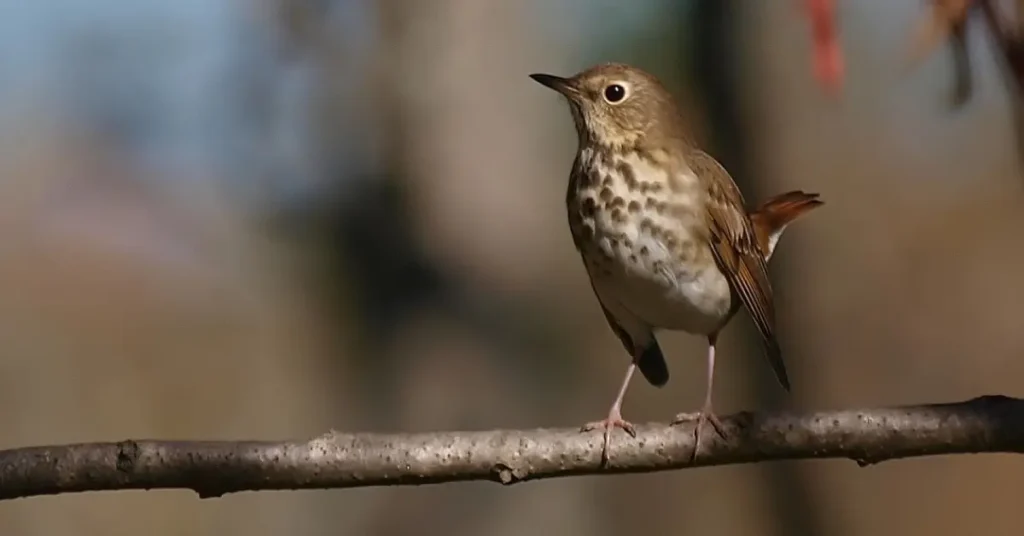
They are similar in appearance to the Swainson’s Thrush, but have a reddish tail that contrasts with their tan-to-olive hued back. In comparison, the Swainson’s Thrush’s tail does not differ from the color of its back.
Like many other thrushes, this species prefers mixed and conifer woodlands, as well as sphagnum bogs, wooded canyons, dry pine woods, and mountain forests. Unlike other brown thrushes, they migrate late and are sometimes seen in winter.
4. Wood Thrush
The Wood Thrush (Hylocichla mustelina) is common throughout the eastern United States during the breeding season. They are bolder than other thrushes, making appearances in city parks, suburbs, and more human-populated woodland areas. They also prefer mainly deciduous woodland habitats throughout their range.

At first glance, the Wood Thrush looks similar to the Hermit and Swainson’s Thrush. On closer inspection, you’ll see that their throat and belly spots are darker, more defined, and contrast more strongly with their white chest and underbelly. They have a russet back and tail and gray cheeks.
5. Townsend’s Solitaire
A mostly gray thrush of the West, the Townsend’s Solitaire (Myadestes townsendi) breeds in western Canada and winters throughout the western United States and Mexico. Some populations are year-round residents. These birds have long tails, a white eyering, and faint yellow markings in their wings.
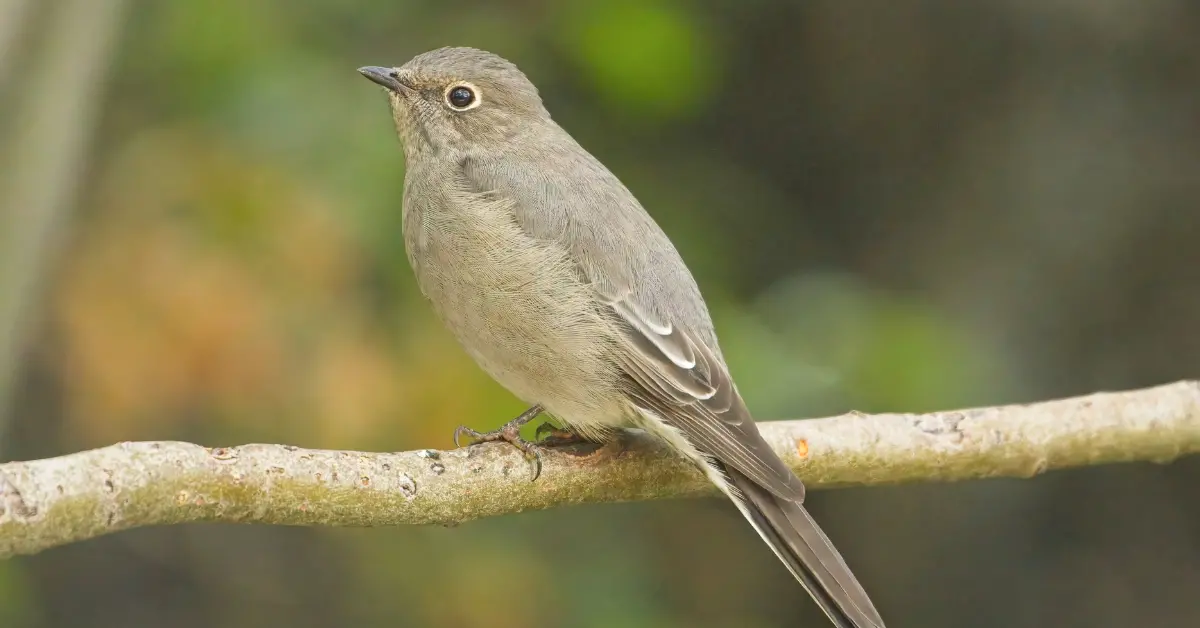
The Townsend’s Solitaire prefers conifer forests in the mountains, as well as pinyon-juniper groves, open woods, semi-open brush, and streamside thickets.
Other Thrushes in North America
The following thrushes are less common and may be harder to observe in the wild compared to the common thrushes above. Some of these thrushes are also rare visitors from other continents.
1. Varied Thrush
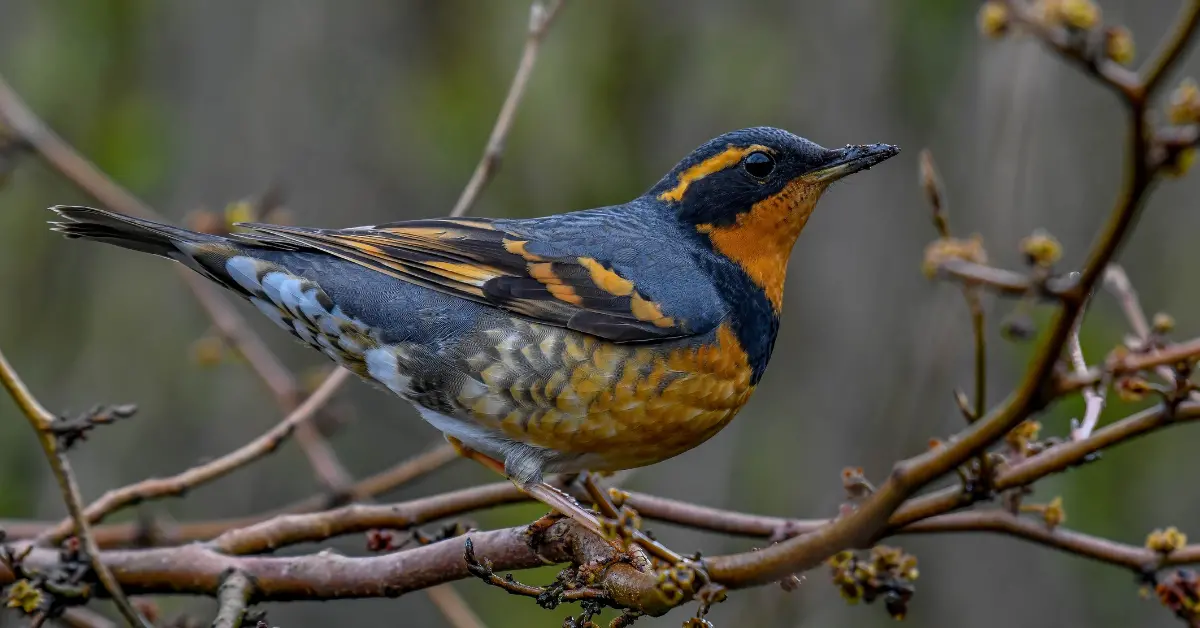
Scientific Name: Ixoreus naevius
Range: Pacific Northwest, from central California up to Alaska.
Description: The plumage of the Varied Thrush is striking and differs dramatically from that of the other thrushes of North America. They have a yellow-orange belly and throat, a black chest band, and a black head with a yellow stripe. Their backs are glossy black, and their wings have yellow stripes.
2. Veery
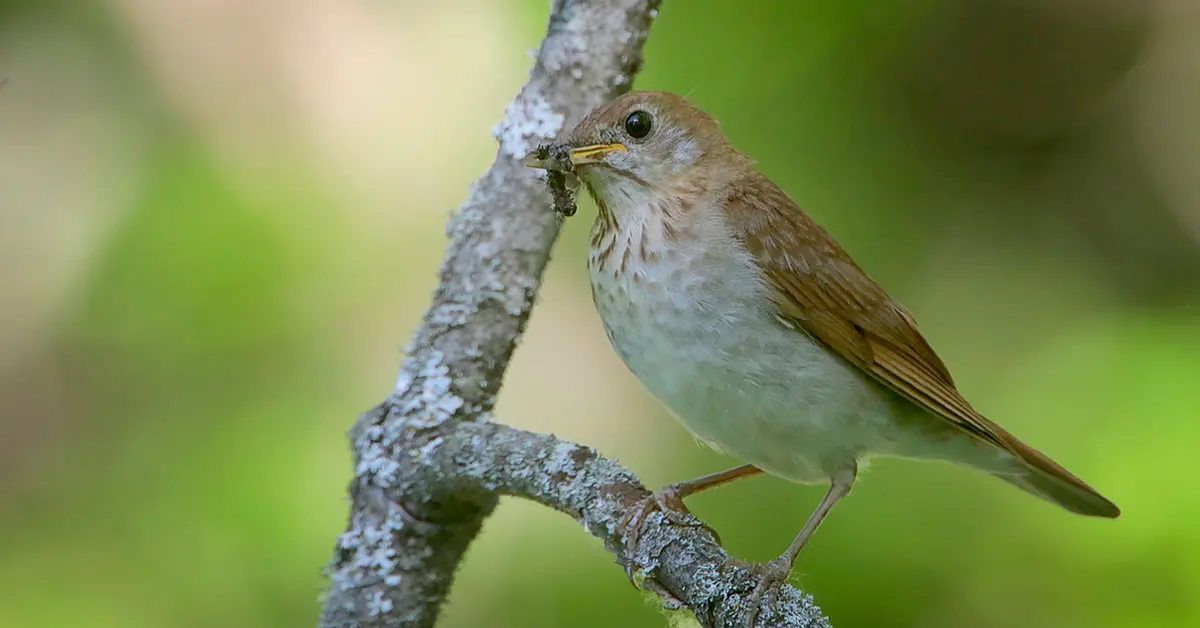
Scientific Name: Catharus fuscescens
Range: Southern Canada and the northern United States, from northwestern Washington across to Maine.
Description: The Veery is similar to other brown thrushes, with a reddish-hued back and white underbelly. Its blurred spots on the throat and chest are less distinct and do not extend down to the belly like the spots on the Hermit, Swainson’s, and Wood Thrush.
3. Gray-cheeked Thrush
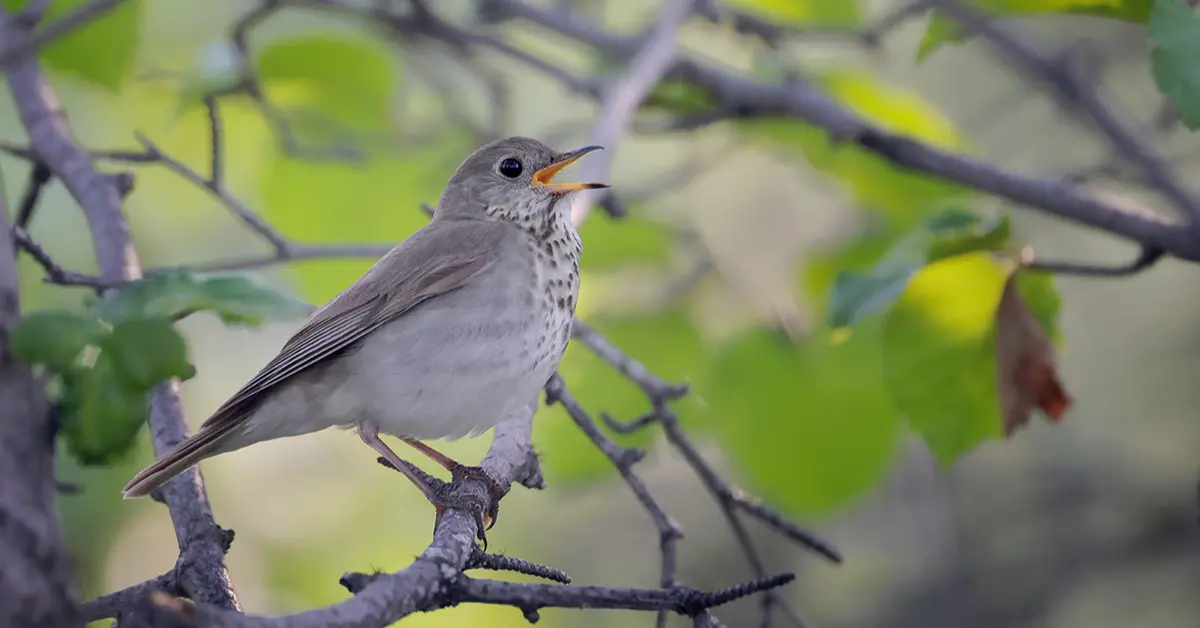
Scientific Name: Catharus minimus
Range: Migrates through the central and eastern United States to breed in northern Canada and Alaska.
Description: The Gray-cheeked Thrush is hard to distinguish from other brown thrushes—it is also the hardest to find. One way to tell them apart is that they lack a white eyering and don’t have any tan-buff coloring on their cheeks or throats (hence their common name).
4. Bicknell’s Thrush
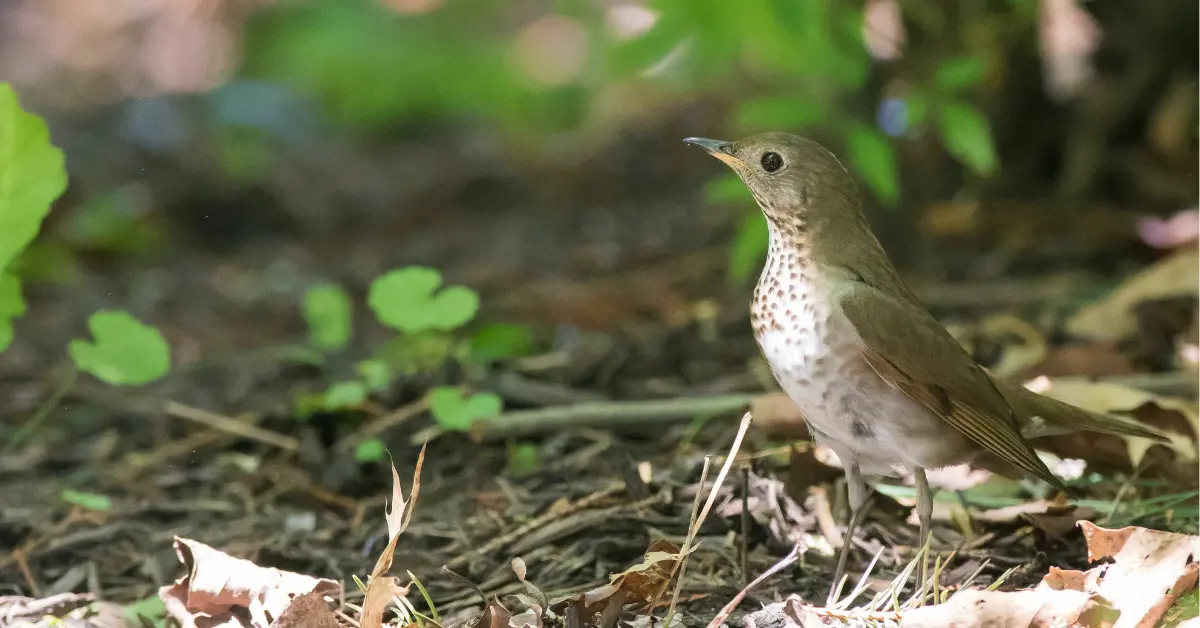
Scientific Name: Catharus bicknelli
Range: Uncommon. Migrates along the East Coast and breeds in the interior northeastern United States and up into Canada.
Description: The Bicknell’s Thrush was once considered the same species as the Gray-cheeked Thrush. They are almost impossible to distinguish in the field. The main difference is that the Bicknell’s Thrush has a faint tan-buff wash on its throat and chest, while the Gray-cheeked Thrush is more stark white in those areas.
5. Aztec Thrush
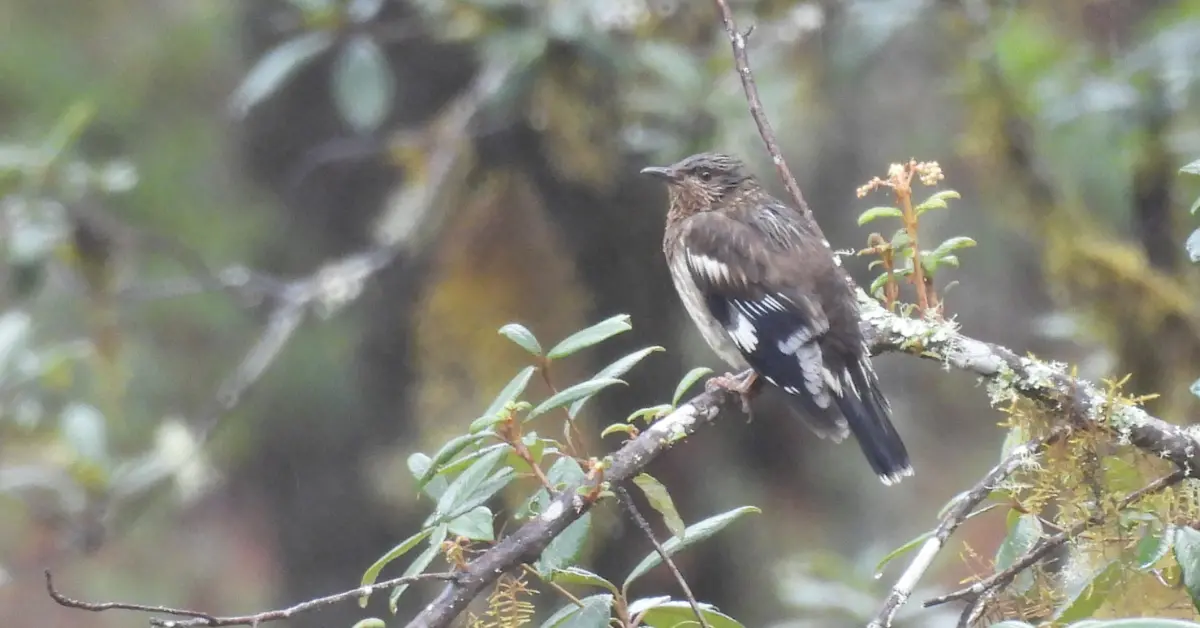
Scientific Name: Ridgwayia pinicola
Range: Year-round but uncommon resident of western Mexico. Sometimes strays into southeastern Arizona.
Description: The Aztec Thrush is a beautiful bird with a dark brown-to-gray hood, white underbelly, gray back, and black-and-white striped wings.
6. Clay-colored Thrush

Scientific Name: Turdus grayi
Range: Year-round and common resident of eastern Mexico, Central America, and northern South America. Its northernmost range dips into the southern tip of Texas.
Description: The Clay-colored Thrush was formally named the Clay-colored Robin because its behavior is nearly identical to that of the American Robin. However, this thrush is tannish brown all over—darker above and paler below.
7. Eyebrowed Thrush
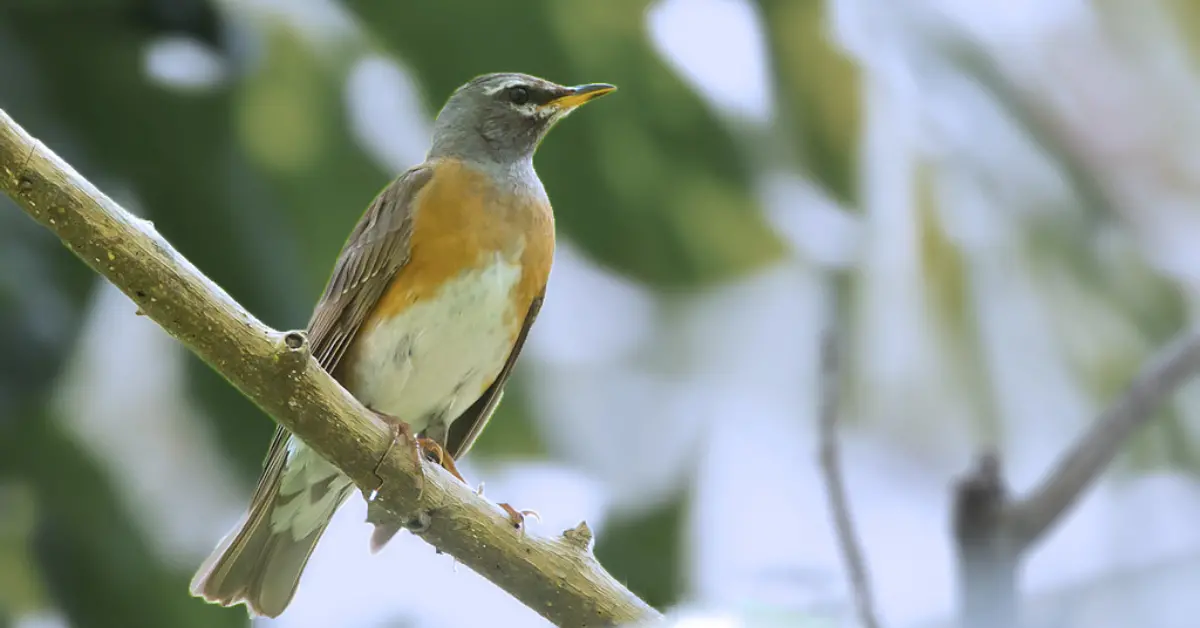
Scientific Name: Turdus obscurus
Range: Rare visitor to Alaska’s Aleutian Islands from its more common range in Russia.
Description: The Eyebrowed Thrush looks similar to the American Robin but has a light gray head, a paler orange chest, and a distinct white eyebrow streak.
8. Rufous-backed Robin
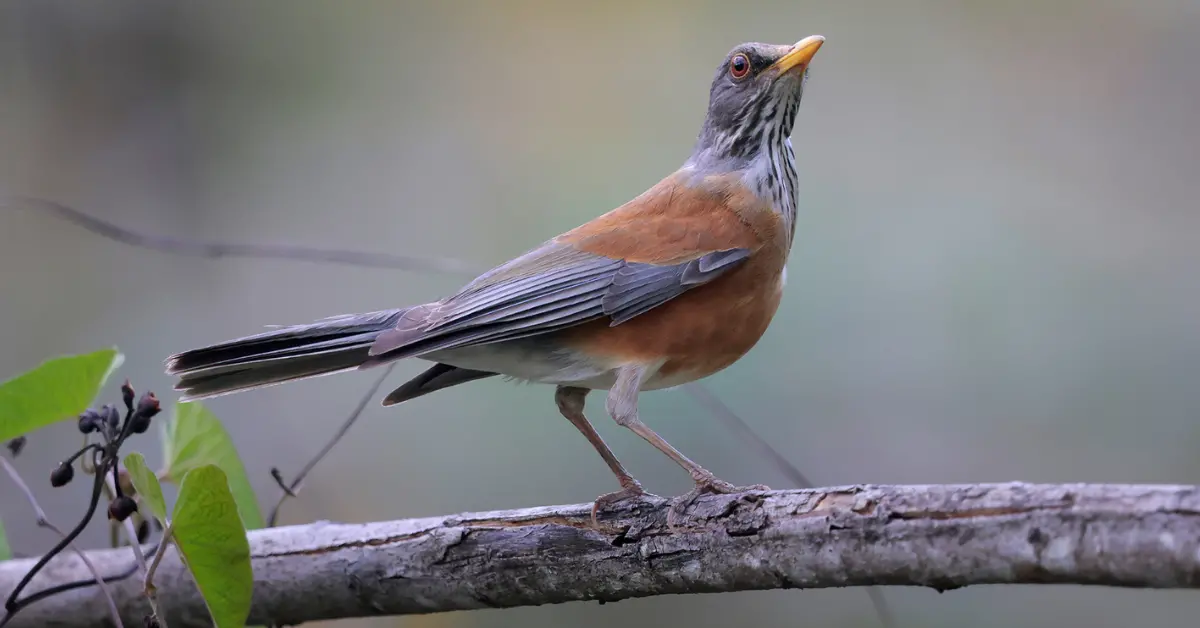
Scientific Name: Turdus rufopalliatus
Range: Year-round resident of western Mexico. Some populations stray into the southern United States, from Texas to California.
Description: The Rufous-backed Robin is similar to the American Robin, but it is much more elusive and shy. It also has black streaks on its throat and rufous hues on its back (hence the common name).
9. Redwing
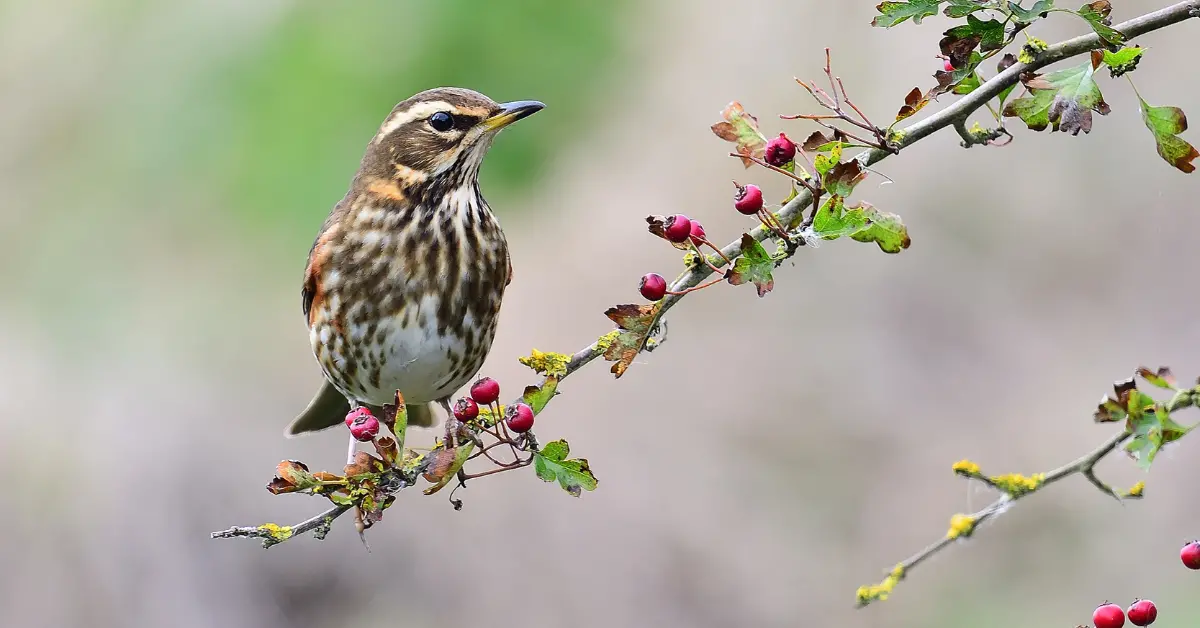
Scientific Name: Turdus iliacus
Range: Widespread resident of Europe and western Asia. Sometimes strays into the northeastern United States.
Description: The tri-colored Redwing is a beautiful bird with dark brown streaks on its white throat, chest, and belly. It has a light gray head, a pale orange-to-white eyebrow streak, and rufous hues around its neck and belly near the wings.
10. White-throated Thrush
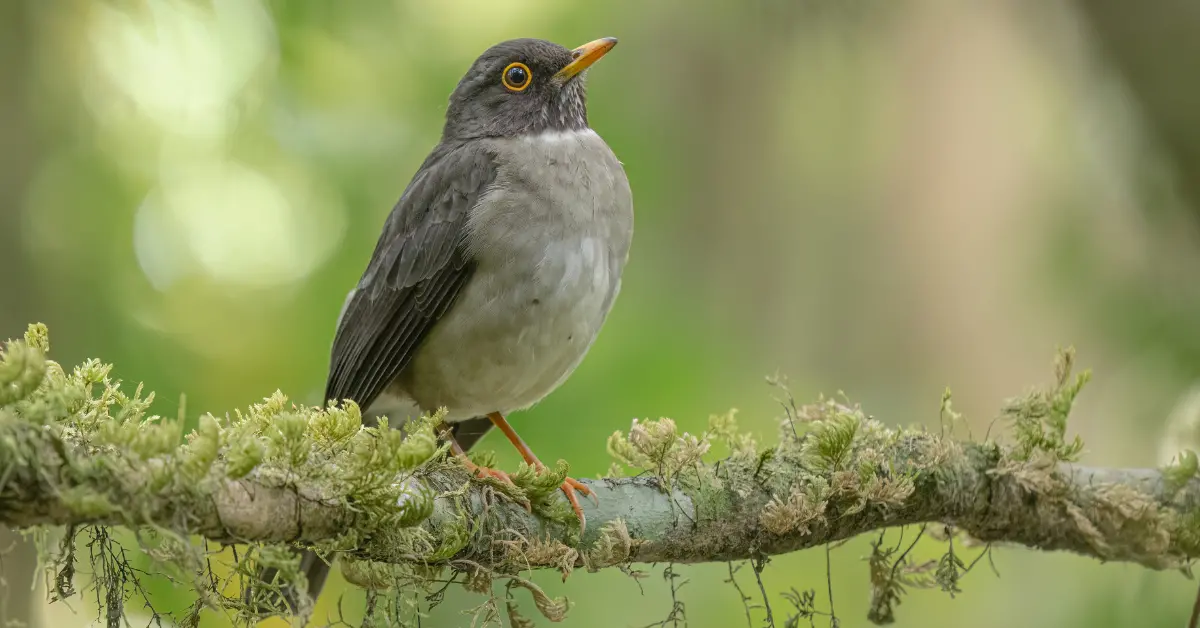
Scientific Name: Turdus assimilis
Range: Northern Mexico to northwestern Ecuador. Sometimes strays into the southern tip of Texas.
Description: The White-throated Thrush behaves like an American Robin, but its back and head are dark gray to olive, and its underside is pale gray with reddish hints. It has dark streaks on a white throat and a white throat band that contrasts with its darker belly.

